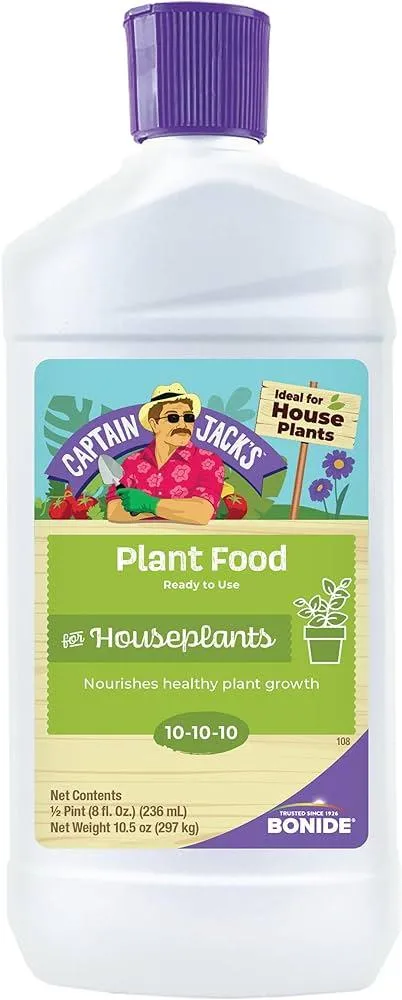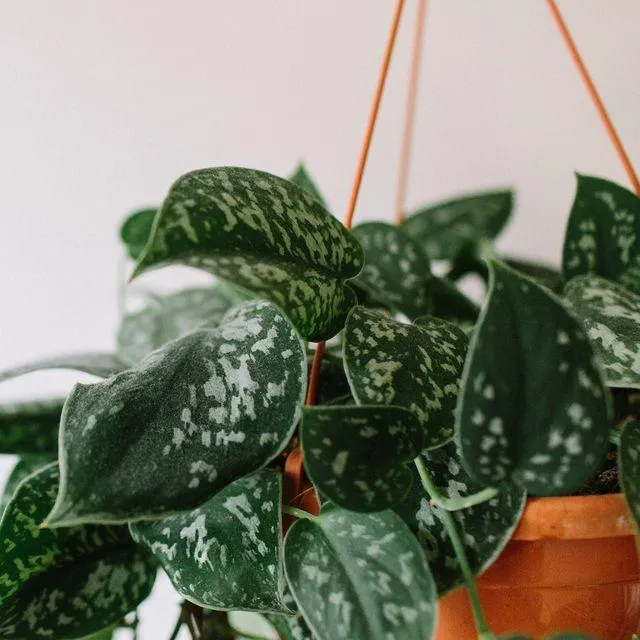
10 Best Indoor Trailing Plants – Find the Perfect Hanging Plants for Your Home
The Best Indoor Trailing Plants for Any Home
If you’re looking to add some vertical interest and greenery to your indoor spaces but don’t have room for tall plants, trailing plants are the perfect solution. From my experience helping customers choose houseplants, trailing plants are very useful for dressing up any area in need of a little leafy enhancement. In this article, I’ll break down the top trailing plant options and help you pick the best ones for your home and care preferences.
English Ivy
English ivy (Hedera helix) basically tops the list as one of the easiest and most versatile indoor trailing plants. It thrives in low to medium light and can handle a variety of conditions. You’ll rarely face issues with this hardy evergreen vine. English ivy grows quickly too, so it sort of spreads out and softens harsh architectural lines in no time. Make sure to prune it occasionally to keep it bushy. Use English ivy to dress up bookshelves, hang from ceiling planters, or allow it to spill over the edges of furniture and shelves. Plus, its dark shiny leaves provide great contrast against light walls.
Pothos
Another extremely low-maintenance option is pothos (Epipremnum aureum), often called devil’s ivy. Pothos can tolerate pretty much any indoor conditions you throw at it, from low windowsill light to dry indoor air. The variegated form is especially stunning with its bright yellow and green contrast. You honestly can’t kill pothos—it just keeps growing no matter what. Use it in hanging planters, over the sides of bookshelves, or train it up a moss pole. Pothos releases oxygen and absorbs toxins from the air too. So it’s kind of like a natural air purifier for your home.
Philodendron
If you have a bit more light, consider philodendrons. There are many varieties to choose from for different trailing effects. Heartleaf philodendron (Philodendron hederaceum) has interesting heart-shaped leaves and tolerates medium light well. Button fern-leaf philodendron (P. bipinnatifidum) offers lacy, delicate foliage. And Brazilian philodendron (P. hederaceum ‘Brazillian’) boasts lush green leaves that really cascade beautifully. Philodendrons thrive in bright, indirect light and average home humidity. Use them in hanging baskets or along shelf edges for a full, lush look.
Wandering Jew
If you want trailing plants with colorful foliage options, wandering Jew (Tradescantia zebrina) varieties offer beautiful stripes, splotches, and mixed patterns. Varieties like ‘Purple Queen’ provide deep purple hues, while ‘Pink Zebra’ boasts hot pink trails. They thrive in medium to bright light and spread out gracefully. Wandering Jew tolerates lower light periods too. You can let them trail beautifully down shelves, hanging planters, or use them as tabletop accents. They bloom small white flowers in spring too. Just be warned—wandering Jew spreads via fast-growing runners, so contain it if needed.

String of Pearls
For a totally unique texture, try string of pearls (Senecio rowleyanus). The pea-sized beads of fleshy green foliage form lovely trailing strands. String of pearls makes a statement in bright, indirect windows and looks stunning spilling over edges. Like ivy, it softens architectural lines. Give string of pearls room to spread as it grows rapidly in warmer seasons. Use it to add interest to shelves, dressers, or desks. It’s a bit specialized so be gentle with watering until established to avoid rotting the strings. But once happy it tolerates low-medium light well.
Sweet Pink Polka Dot Plant
Care Tips for Indoor Trailing Plants:
- Water when the topsoil feels dry to the touch, usually every 7-10 days.
- Mist foliage occasionally to boost humidity. Trailing plants appreciate 50-60% indoor humidity.
- Fertilize monthly in spring and summer with a diluted, water-soluble houseplant food.
- Prune regularly to control vine growth and encourage bushiness.
- Rotate plants occasionally to encourage even growth. Direct west or south windows are ideal.
- Repot when roots grows thickly from the drainage holes or the plant is pot-bound.
- Ensure pots have drainage holes for proper soil aeration and moisture control.
Another really showy option is sweet pink polka dot plant (Hypoestes phyllostachya). As the name suggests, it produces dark green leaves dotted with hundreds of tiny pink polka dots, hence the common name “freckle face.” It looks almost too perfect! Sweet pink polka dot plant forms a dense carpet perfect for hanging baskets. It does require regular water and humidity, taking to medium to bright windowsills. Be gentle until established. But once happy, it’s a real stunner brightening up any space.
Prayer Plant
If you like unusual traits, check out prayer plants like Maranta leuconeura. Their trifoliate leaves fold up vertically overnight in a “prayer” position, then reopen horizontally during the day—it’s pretty neat! Some varieties like ‘Trinidad’ offer bright green leaves marked in red or pink. They prefer medium light, high humidity, and soil that doesn’t fully dry out. Prayer plants make a statement in hanging baskets or on shelving. Just be careful not to overwater like I did once when the roots started to rot. Live and learn, I guess!
Chinese Evergreens
Chinese evergreens like Aglaonema also introduce great colorful patterns. Varieties such as ‘White Christmas’ bear dark green leaves edged in cream, while ‘Silver Bay’ boasts green-and-silver variegation. They tolerate lower light and dryer air fairly well. Let Chinese evergreens trail gracefully down shelving, stair rails, or use them to fill shelves. They release oxygen too. Plus the colorful leaves stay looking great year-round, basically like a low-maintenance perennial. You can’t go wrong displaying one in your home to brighten up any spot.

Nephthytis
Last but not least, consider arrowhead vine or nephthytis for its feathery foliage. It naturally cascades beautifully in hanging pots or along shelves. The ruffled leaves provide gorgeous texture. Nephthytis grows quite quickly in medium to bright light with consistent moisture. It takes to high humidity well too. The vines gracefully spill over edges for an airy effect. Use it to dress up bookshelves, hang from ceiling planters, or train along staircase railings. With its full, lacy growth, nephthytis is a statement trailing plant perfect for medium to large spaces.
With so many great trailing plant options to pick from, you’re sure to find the perfect ones to liven up your indoor areas. Just match them to your light levels and care preferences. Enjoy watching these vines spill gracefully over edges while helping clean the air. Over time they really feel like living art decorating your home. Let me know if you have any other questions in choosing low-maintenance trailing plants for your space!
Top Indoor Trailing Plants for Your Home
| Plant | Care Level | Light Needs | Growth Rate | Ideal Hanging Locations |
|---|---|---|---|---|
| Pothos | Low | Low to Medium | Moderate | Shelves, hanging baskets |
| English Ivy | Low | Low to Medium | Moderate | Shelves, hanging plants |
| Spider Plant | Low | Medium to Bright | Fast | Shelves, hanging baskets |
| Tradescantia | Low | Medium to Bright | Moderate | Shelves, windowsills |
| Philodendron | Low | Low to Bright | Moderate | Shelves, hanging plants |
FAQ
- What types of indoor plants grow well trailing down from shelves or hanging pots?
Probably the best trailing plants for indoors are pothos and spider plants. Pothos comes in several varieties with different color patterns on their heart-shaped leaves. They’ll grow very long vines that look cool hanging down. Spider plants are pretty much foolproof – they can tolerate low light and don’t need much water. Their little baby plants grow right on the mom plant, which is kind of neat.
- Are there any trailing plants that have particularly attractive flowers?
Some vines which produce nice blooms contain English ivy and Swedish ivy. English ivy puts out small greenish-white flowers occasionally throughout the year. Swedish ivy bears clusters of yellow flowers that are seriously stunning. However, their pollen can cause issues for people with plant allergies. On the other hand, petunias and million bells are excellent trailing annuals that offer colorful non-stop flowers.
- How do I care for trailing plants properly?
To care for vines, water them when the top inch or so of soil feels dry. You should use lukewarm water and water thoroughly until it drains out the drainage holes. After that, don’t water again until the soil is similar dry. At the same time, vines like filtered or dappled light, so position them somewhere with bright indirect sun. However, check plant tags for any unique light needs. Fertilize them monthly in the growing season with a dilute balanced houseplant food.

- What is the best way to encourage trailing plants to grow downward?
Basically, the number one way to get vines to hang down attractively is to provide something for them to climb. You can use poles, stakes, wires, or cords dangling from above pots or shelves. The plants will basically send out runners that will grow along the supports towards the light. You just occasionally need to train the stems in the right direction if they start growing up instead of down. It’s kinda fun to guide their direction!
- How often should I trim or prune trailing plants?
Most vines don’t require much trimming, if any. You mainly just need to prune off any non-flowering shoots or stems that grow inward instead of trailing down. Sometimes plants get leggy as well. In that case, cutting the vines back by 1/3 can encourage bushier new growth. Check plant tags for guidance on specific pruning times. Overall, pruning helps keep vines looking full and vigorous. You may want to ask an expert at your local garden center for their advice on individual varieties.
- Are any trailing plants toxic to pets or children?
You’ve really got to be careful about poisonous vines if you have pets or kids. Some that can cause issues contain Swedish ivy, English ivy, and pothos. While those plants are generally non-toxic to adults, their small berries or leaves could make a dog or cat sick if ingested. So if little ones are around, it’s probably better to choose pet-safe vines like spider plants, petunias or English ivy varieties without berries. Does anybody actually know if ivy pollen can potentially trigger asthma in some folks as well?
- What kinds of trailing plants would you recommend for covering an unsightly area?
Strong, fast-growing vines are awesome for concealing unattractive spaces. Potato vines and morning glories come in large, colorful blooms and will spread abundantly in one season. However, they’ll tend to die back in winter. English ivy spreads very generously for year-round coverage, yet may be invasive in some ecosystems. Trumpet creepers add lovely red, orange or yellow trumpet-shaped flowers but can become vastly large and hard to manage. Maybe start with a less aggressive option like silver falls Argentia or a flowering mandevilla and see how it goes?
- Are any trailing plants good for privacy screening?
Some top picks for privacy vines contain wisteria, climbing hydrangea, and climbing roses. Wisteria puts on an awe-inspiring bloom show in spring but can grow rapidly so will need pruning. Climbing hydrangeas offer huge white or pink flower clusters, plus their lush green leaves provide lasting greenery and seclusion. Climbing roses, such as ‘William Baffin’, produce fragrant flowers and thorny canes that will doubtless build an absolute curtain. You’ll want sturdy supports to uphold any of those major trailers though.
